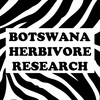Factors affecting northern botswana's tsessebe population
project overview
Populations of large terrestrial mammals are declining globally in response to changing environmental conditions and resource availability. In the Okavango Delta, populations of tsessebe (Damaliscus lunatus) have been declining at a rate of approximately 10 – 13% per annum for the last few decades. No research has ever been carried out on tsessebe ecology in Botswana, so the causes of this decline are as yet unknown. This project will study the basic ecology of tsessebe in the Okavango Delta, and combine those results with remote sensing and satellite imagery to identify any historical and ongoing changes in the availability of their required resources.
The specific objectives of the project are as follows:
- To identify key seasonal habitats
- To record crucial forage species
- To investigate population demographics across the study area
- To determine the levels of genetic variability within the population
- To relate the above factors to historical and ongoing environmental changes
The specific objectives of the project are as follows:
- To identify key seasonal habitats
- To record crucial forage species
- To investigate population demographics across the study area
- To determine the levels of genetic variability within the population
- To relate the above factors to historical and ongoing environmental changes
methods
The project will focus on the area between Santawani Lodge and Third Bridge, in Moremi Game Reserve. Three seasons will be defined based on changing water availability: rainy (December – March), early flood, when floodwaters rise (April – July) and late flood, when floodwaters recede (August – November).
This project is in collaboration with the Royal Veterinary College of London, who will be providing eight high-resolution GPS-enabled collars that will be fitted to females in different herds in June 2015. These collars will be programmed to drop off one year later, removing the need to dart the animals a second time to recover the collars.
Each collared animal will be tracked once per month, using conventional telemetry equipment. Once located, data will be collected on the population demographics of the herd. Behavioural focals will be carried out on each member of the herd to develop a daily activity budget. The GPS data from the collars will be used to identify recently-used grazing sites, which will then be visited to collect data on vegetation characteristics. Faecal samples will be collected from each individual and analysed for genetic markers.
This project is in collaboration with the Royal Veterinary College of London, who will be providing eight high-resolution GPS-enabled collars that will be fitted to females in different herds in June 2015. These collars will be programmed to drop off one year later, removing the need to dart the animals a second time to recover the collars.
Each collared animal will be tracked once per month, using conventional telemetry equipment. Once located, data will be collected on the population demographics of the herd. Behavioural focals will be carried out on each member of the herd to develop a daily activity budget. The GPS data from the collars will be used to identify recently-used grazing sites, which will then be visited to collect data on vegetation characteristics. Faecal samples will be collected from each individual and analysed for genetic markers.
findings and publications
This project is still in the data collection stage so we do not yet have any results to present.
Outputs
The results from this study will be published as a series of articles in peer-reviewed scientific journals, and presented at international conferences.
Outputs
The results from this study will be published as a series of articles in peer-reviewed scientific journals, and presented at international conferences.
